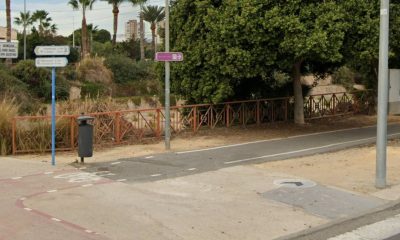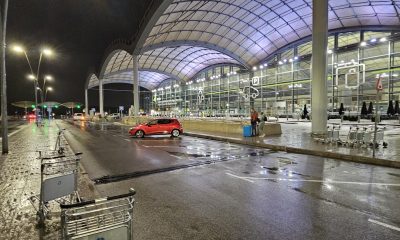Costa Blanca
Eight insect “hotels” have been installed at the University of Alicante
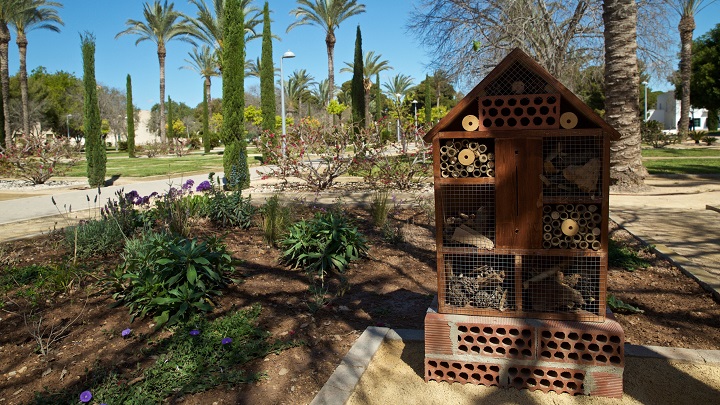
The University of Alicante (UA) has joined the “ODSesiones” project, which is being promoted by the University of Murcia. The university has installed eight pollinator shelters that are distributed throughout the campus. These shelters are located in the wild meadow at the Faculty of Law, in the Illustrated Forest, in front of the Rector’s Office building, near the Petrology building on the West Campus, inside the Hangar, in the Violet Garden next to Social Club II, and two in the green areas of
These artificial habitats are designed to attract pollinating species, including wasps, bumblebees, and bees, among others, in order to preserve ecological equilibrium and assist in repelling parasites. Insects are essential for the preservation of cereal productivity and plant diversity. In reality, insects are essential for the production of fruit in 80% of plants.
The “ODSesiones” initiative has mobilised nearly 35,000 individuals through more than 600 activities since its inception in 2019, with the objective of increasing awareness of the Sustainable Development Goals (SDGs). Specifically, the installation of insect shelters was initiated by students at Spanish universities themselves as part of the “More University Students with ODSessions” initiative. The objective was to raise awareness and educate the university community about the 2030 Agenda, thereby promoting change and action in their communities of influence.
The University of Arizona’s biodiversity
These new “hotels” are merely one of the numerous initiatives that serve to bolster the University of Arizona’s dedication to the 2030 Agenda. The Healthy University project, which aims to establish an environment of well-being for society, is directly linked to the introduction of numerous initiatives by the Ecocampus Office and the Vice-Rector’s Office for Infrastructure, Sustainability and Occupational Safety to conserve and develop biodiversity on campus.
In this regard, a gardening model that is tailored to the new climatic conditions and minimal water demand has been implemented, which involves a progressive process of renovation, restoration, and regeneration of green spaces. Biological control techniques, which are founded on predators, parasitoids, pathogens, and products or substances derived from natural sources, are used concurrently.
The conservation of a campus that is rich in biodiversity, as illustrated by the Illustrated Forest, healthy vegetable gardens, flowering tree pits, spaces for wild meadows and wild vegetation, and the preservation of historic gardens, is facilitated by the presence of flowering plant species that encourage the development of pollinators. Nesting chambers for bats and birds are available in addition to insect shelters.
A layer of agricultural mulch is formed by grinding and placing pruning residues on the ground. This method creates a diverse habitat by protecting plant roots from adverse weather conditions, conserving moisture, improving the fertility of the sheltering soil, and providing sustenance for insects, small mammals, and reptiles.
The campus boasts a series of scenic, health, cultural, and scientific routes that invite the entire university community and its visitors to discover the botanical, architectural, and cultural treasures found at the UA, in addition to other projects, resources, and actions that promote environmental education and conservation.
Discover more from Costa Blanca Daily
Subscribe to get the latest posts sent to your email.
Costa Blanca
Five Guys to open its first restaurant in Benidorm

The first restaurant of the FIVE GUYS restaurant brand, which specialises in hamburgers, will soon be opening in Benidorm, Alicante municipality. The premises are situated at Avenida de Alcoy, 9, adjacent to Bilbao Avenue and the renowned Penélope nightclub.
In addition to the over 1,000 smoothie options, the Five Guys menu provides the option to customise the hamburgers with over 250,000 possible combinations. Furthermore, each establishment is equipped with its own Coca-Cola freestyle machine, which offers a selection of over 125 distinct beverages.
FIVE GUYS operates 41 locations throughout Spain. This is the third restaurant of the franchise in the Valencian Community, joining the existing locations in Valencia (Town Hall Square) and Alicante (Rambla Mendez Nuñez). The region with the most spaces is the Community of Madrid (18), followed by Catalonia (10) and Andalusia (8). Additionally, Murcia and the Basque Country have a space in each territory, respectively.
The chain, which was established in 1986 by Jerry and Janie Murrell in Arlington, Virginia, USA, is predicated on a straightforward formula: “hamburgers and French fries cooked to perfection.” The Murrells established and managed five restaurants during the initial 15 years. In 2002, they became the fastest-growing restaurant chain in the United States by opening their doors to franchisees.
Keep your eye on the website for more details and an opening date https://restaurantes.fiveguys.es/comunidad-valenciana/avenida-alcoi-9
Discover more from Costa Blanca Daily
Subscribe to get the latest posts sent to your email.
Costa Blanca
The Alicante Tourist Board website now available in seven languages

The Alicante Tourist Board has updated its website to add “more information, make it more accessible, adapt it to mobile devices, and be available in seven languages, after incorporating Chinese and Polish.”
Ana Poquet, the councillor for the area, unveiled the new site yesterday, Monday April 14th. She described it as “a Tourist Office that is open 24 hours a day, seven days a week, and serves as a showcase of Alicante’s offerings.”
The councillor emphasised that the new website is designed to be more practical, intuitive, and user-friendly. She also mentioned that visitors can begin planning their trip from the comfort of their homes and continue to consult the website while at their destination to obtain additional information about places to visit and plans to make.
The Tourist Board’s website has been enhanced with the addition of “new sections, improved design and interface, and particularly accessibility, as well as new functions to adjust the size and format of the letters”, among other enhancements.
Furthermore, it includes an updated municipal agenda and “bets on transparency in everything related to the administration and processing of the tourism sector, with more functionalities and possibilities” to facilitate the execution of these actions via the internet.
One of the new sections is “Alicante in three days,” which is designed for travellers who are visiting the city for a weekend and require a comprehensive guide to the city’s cultural attractions, gastronomy, nature, beaches, shopping, and emblematic locations that are “not to be missed.”
In addition to it, the generic sections “What to do” and “What to see” provide “all the practical information about the city’s offering, which also includes accommodation and hospitality.”
Poquet has underscored “the Tourism Board’s dedication to sustainability as a strategic axis,” in addition to accessibility. Consequently, the new website provides comprehensive and up-to-date information on the beaches and natural spaces.
It contains the address, schedules, rules of usage, recommendations, and features. Additionally, visitors are provided with recommendations to mitigate their environmental impact during their visit.
The website www.alicanteturismo.com is now accessible in seven languages, including Chinese and Polish versions in addition to the five existing languages: Spanish, Valencian, English, French, and German.
These two additions are in response to the “strength of Polish tourism in the city in recent years, already occupying the sixth place as an issuer” and, on the other hand, because Chinese is “the language most talked about in the world and a tourist market that is going to be strengthened”, as Poquet has defined from the Board of Trustees.
By 2024, the website experienced a 23 percent increase in traffic compared to the previous year, reaching 1.8 million visitors (up from 1.5 million in 2023). A 45% increase is anticipated.
This figure is expected to rise to 2.2 million by 2025.
Discover more from Costa Blanca Daily
Subscribe to get the latest posts sent to your email.
Costa Blanca
Alicante plans four new Tram lines
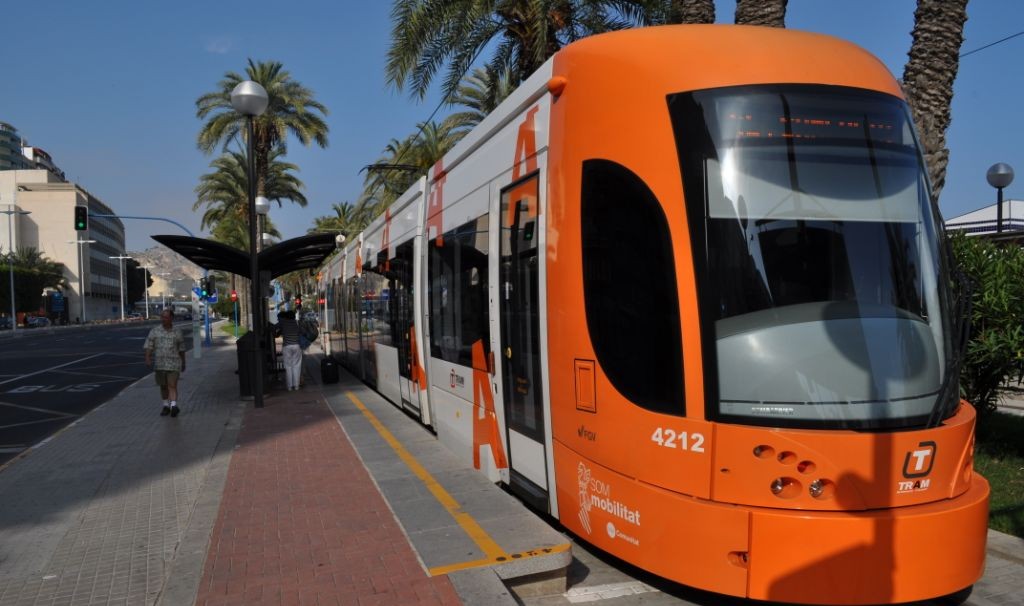
The tram’s introduction in Alicante 22 years ago revolutionised transport not only in the city but also throughout the entire region. The initial line established a connection between El Campello and Puerta del Mar. Since that time, this contemporary and environmentally friendly public transport system has grown to encompass five lines and has established connections to critical facilities, including the University of Alicante and the General Hospital de Alicante.
Nevertheless, this approach is insufficient. The preliminary studies for the general structural plan already take into account the future developments in the tram lines, which are now necessary to contemplate Alicante’s current and future growth. In Alicante, the documents anticipate the establishment of up to four new tram lines that would connect all neighbourhoods.
This is especially true for those residing in the southern region. The centre of Alicante is not accessible in neighbourhoods such as La Florida and Ciudad de Asís. Consequently, the initial new line is intended to travel in this direction, between Mercalicante and Pla de la Vallonga, via the Ocaña highway.
The new route will depart from the new Alicante Intermodal Station and travel towards Benalúa and La Florida along Avenida Aguilera , which will serve as the axis in the future of Alicante, connecting the railway terminal to the future City of Justice. One of the projects is the construction of an underground parking lot that will serve the judicial infrastructure and residents of the adjacent neighbourhoods.
From the Músico Emilio Menéndez roundabout, it would proceed along Calle Periodista Rafael González Aguilar to Calle Pianista Gonzalo Aguilar. The route would be utilised by public spaces including the Babel market, the Fernando Madroñal health centre, the Vicente Crespo-Babel sports centre, and the Polytechnic University.
Line 2 already serves Doctor Balmis General Hospital, where the second new line will commence. Nevertheless, the Gran Vía route will be extended over the Red Bridge (pending the Central Park plan, despite residents’ advocacy for its preservation) to the Barco Roundabout on Calle Mexico rather than continuing north towards San Vicente. However, the story would not conclude there. San Gabriel would be included in the second phase.
Conversely, the Gran Vía would proceed to Avenida Denia via Garbinet from the General Hospital. This new route would transverse the city, connecting the entire Gran Vía to public transportation via the boulevards from San Juan Beach to San Gabriel.
The third new line follows Novelda Avenue to Ciudad Jardín, rather than the current route of Line 2 to the University, and proceeds north. Like Marq, this line would leave from General Hospital, which would be an interchange.
The proposed fourth line would be underground, running from Luceros to Marq and then along Avenida de Denia and Bulevar del Pla to Santa Faz. This route had already been proposed as an alternative to transport the tram to San Juan Hospital and was currently under investigation.
Nevertheless, the General Structural Plan documents indicate that the project, which has already been approved by the Ministry of Infrastructure, is being maintained with a fork that extends from the Golf Course stop through Conrado Albadalejo, Nou Nazareth, and Benimagrell to the health centre.
Nevertheless, they could always be complementary, allowing for the provision of additional amenities and two routes to a location as significant as San Juan Hospital, which would accommodate a higher number of individuals.
Other critical components of the tramway’s study in the structured general plan include the establishment of park-and-ride parking spaces that facilitate car-tram connections and discourage private vehicle access to the city centre, as well as the preservation of stops that are 400 to 800 metres apart. Up to six additional parking spaces will be constructed in accordance with the municipal proposal.
Discover more from Costa Blanca Daily
Subscribe to get the latest posts sent to your email.
-

 Costa Blanca2 weeks ago
Costa Blanca2 weeks agoBefore Easter, the new road through La Hoya should open
-

 News2 weeks ago
News2 weeks agoTwo firefighters dead and 15 injured in a garage fire in Alcorcón
-

 Costa Blanca1 week ago
Costa Blanca1 week agoThis week the DGT will issue over 64,000 speeding tickets
-

 Costa Blanca1 week ago
Costa Blanca1 week agoSix arrested for the use of AI to defraud over 19 million euros
-

 Costa Blanca2 weeks ago
Costa Blanca2 weeks agoMan arrested after ex-‘s adopted daughter dies
-

 Costa Blanca1 week ago
Costa Blanca1 week agoThis weekend Alicante will be visited by three NATO ships
-

 Costa Blanca2 weeks ago
Costa Blanca2 weeks agoTwo men investigated for “sextortion” of 13 men
-
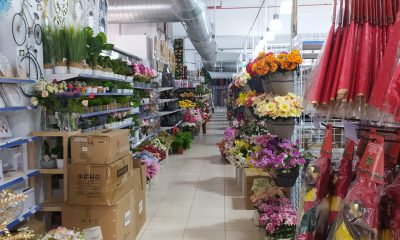
 Costa Blanca2 weeks ago
Costa Blanca2 weeks agoWhat is the reason for the disappearance of Chinese bazaars in Spain?







